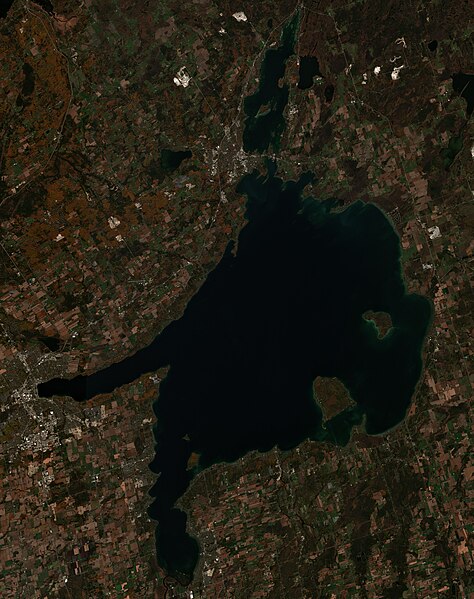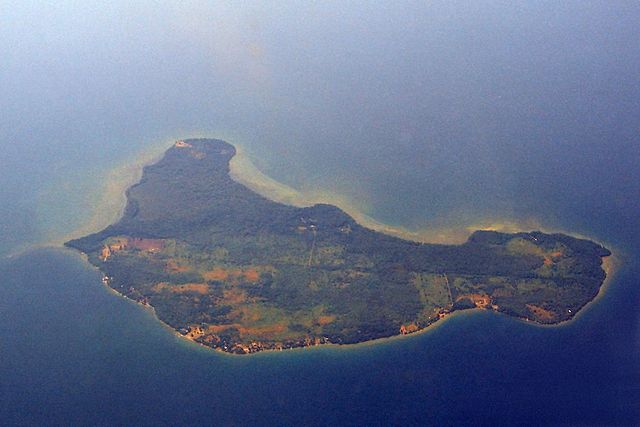Lake Simcoe is a lake in southern Ontario, Canada, the fourth-largest lake wholly in the province, after Lake Nipigon, Lac Seul, and Lake Nipissing. At the time of the first European contact in the 17th century, the lake was called Ouentironk by the native Wendat/Ouendat (Huron) people. It was also known as Lake Taronto until it was renamed by John Graves Simcoe, the first Lieutenant-Governor of Upper Canada, in memory of his father, Captain John Simcoe of the Royal Navy. In Anishinaabemowin, the historical language of the First Nations living around this lake, namely Anishinaabek of Rama and Georgina Island First Nations, the lake is called Zhooniyaang-zaaga'igan, meaning "Silver Lake".
Satellite view of Lake Simcoe and Lake Couchiching directly north of it
Downtown Barrie and Kempenfelt Bay, the western arm of Lake Simcoe
Aerial view of Thorah Island, 2012. The island is one of several contained in Lake Simcoe.
The mouth of the Black River at the southern shoreline of Lake Simcoe.
John Graves Simcoe was a British Army general and the first lieutenant governor of Upper Canada from 1791 until 1796 in southern Ontario and the watersheds of Georgian Bay and Lake Superior. He founded York, which is now known as Toronto, and was instrumental in introducing institutions such as courts of law, trial by jury, English common law, freehold land tenure, and also in the abolition of slavery in Upper Canada.
Portrait by George Theodore Berthon
A memorial to Simcoe in Exeter Cathedral
The 1903 unveiling of the statue of John Graves Simcoe at Queen's Park in Toronto
Statue of John Graves Simcoe first Lieutenant-Governor of Upper Canada by Walter Seymour Allward 1903 Queen's Park (Toronto)








